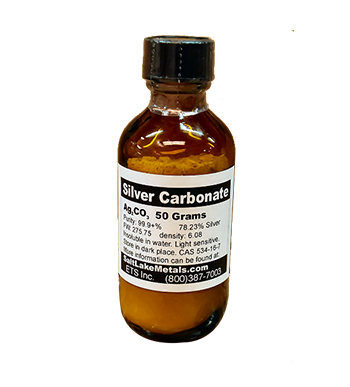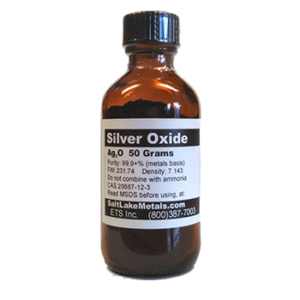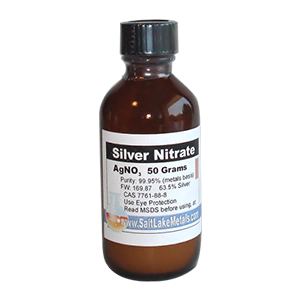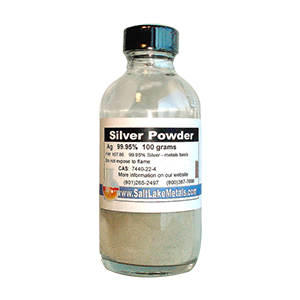Description
DOES NOT SHIP OUTSIDE THE USA
Silver Carbonate – 99.9+% purity
Our Silver Carbonate is new and freshly prepared. The powder has been ground and sifted.
This is a dry, pale yellow-green powder that does not absorb moisture from the air.
It is best to buy it pre-ground and sifted (like ours).
Silver Carbonate Properties:
CAS Number: 534-16-7
Synonyms: Ag2CO3 Silver Carbonate
Formula Weight: 275.75 grams/Mole — (78.23% pure Silver)
Density: 6.08
Melting Point: 210°C ( 410°F ) – Begins to release CO2 to form Silver Oxide – See details below
Boiling Point: 280°C ( 536°F ) – Begins to release Oxygen to form Silver Powder – See details below






